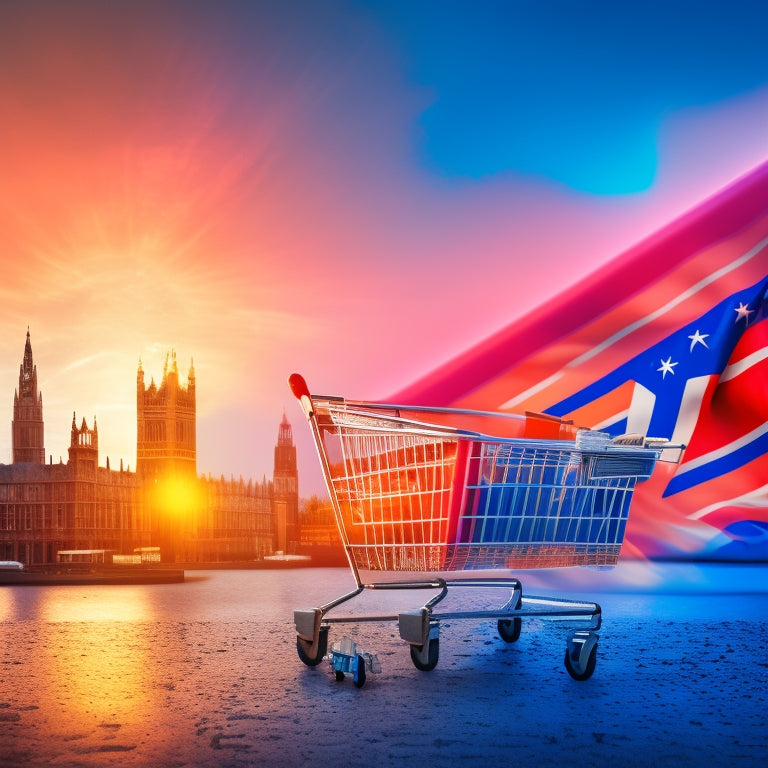
Unlock Success: UK Merchant's Ecommerce Strategies Revealed
Share
To reveal success in ecommerce, UK merchants must adapt to the continuously evolving global landscape. Understanding consumer behavior, driven by insights into preferences, shopping habits, and purchasing decisions, is pivotal. Effective strategies involve tailoring offerings, pricing, and payment options to diverse regional and cultural nuances. Embracing payment trends, such as Open Banking, can provide a competitive edge. By grasping these key factors, merchants can develop successful ecommerce strategies that cater to their target audience, ultimately driving sales and loyalty. To unveil the secrets of ecommerce success, look closer at the intricacies of consumer behavior and the competitive landscape.
Key Takeaways
• UK merchants must adapt to evolving consumer behaviors and technological advancements to stay competitive in the ecommerce landscape.
• Understanding target audience through market analysis and customer segmentation is crucial for tailoring offerings and pricing strategies.
• Insight into consumer behavior drives sales and loyalty, with nearly 70% of UK consumers shopping from brands that understand their needs.
• Developing tailored strategies for global ecommerce success requires understanding local markets, consumer behavior, and payment trends.
• Adapting payment options to regional preferences and embracing trends like Open Banking can increase conversion rates and provide a competitive edge.
Navigating the Ecommerce Landscape
As the global ecommerce landscape continues to evolve, UK merchants must adapt to shifting consumer behaviors, technological advancements, and emerging market trends to remain competitive and capitalize on growth opportunities.
Conducting thorough market analysis and customer segmentation is essential to understanding the needs and preferences of their target audience. This enables them to tailor their offerings and pricing strategies to resonate with their customers, thereby gaining a competitive edge in the market.
A keen understanding of the competitive landscape is also vital, as it allows merchants to identify gaps and opportunities that can be leveraged to drive sales and revenue growth.
Understanding Consumer Behavior
Nearly 70% of UK consumers are more likely to shop from a brand that understands their individual needs and preferences, highlighting the significance of merchants gaining insight into consumer behavior to drive sales and loyalty.
To explore this, merchants must dive into the realm of consumer preferences and shopping habits. Understanding what drives purchasing decisions, from social media influence to product reviews, is essential.
Strategies for Global Success
To benefit from the vast opportunities in the global ecommerce market, merchants must develop and implement tailored strategies that cater to diverse consumer preferences, cultural nuances, and regulatory requirements across different regions.
International expansion requires a deep understanding of local markets, consumer behavior, and payment trends. Merchants should adapt their payment options to accommodate regional preferences, such as credit cards in Europe or alternative methods in Asia. By doing so, they can increase conversion rates and reduce cart abandonment.
Additionally, staying ahead of payment trends, such as the rise of Open Banking in the UK, can provide a competitive edge in the global market. By embracing these strategies, merchants can access new revenue streams and achieve global success.
Frequently Asked Questions
What Are the Most Common Online Shopping Days in the UK Calendar?
In the UK, online shopping trends reveal that Mondays and Tuesdays are the most popular days for online purchases, with seasonal sales peaking during winter holidays and summer clearance events, influenced by consumer behavior and purchasing patterns.
How Do European Countries' VAT Rates Impact Cross-Border Sales?
"The VAT rate puzzle: a delicate dance for cross-border sellers. European countries' varying VAT rates can lead to tariff implications, and with Brexit effects, it's a complex waltz to navigate, but understanding these rates is key to harmonious sales."
Can UK Merchants Use a Single Payment Gateway for EU Sales?
UK merchants can utilize a single payment gateway for EU sales, but must navigate cross-border challenges, including currency conversion and payment processing complexities, to guarantee seamless transactions and compliance with EU regulations.
What Are the Primary Drivers of Shopping Cart Abandonment in the Uk?
The primary drivers of shopping cart abandonment in the UK are checkout optimization issues, concerns over payment security, and unexpected shipping costs, highlighting the need for merchants to prioritize customer experience and seamless transactions.
Do UK Consumers Prefer Domestic or International Shipping Options?
The age-old debate: do UK consumers prefer domestic or international shipping options? Well, post-Brexit, it's no surprise they're opting for domestic, given the uncertainty around customs hassles and added costs, aligning with consumer preferences for speed and convenience.
Related Posts
-

5 Best Ways to Scale Ecommerce With Online Courses
You're already crushing it in ecommerce, but you want to take it to the next level. You can do just that by leveragin...
-
What You Need to Know About Shopify Sitemap
This article aims to provide a comprehensive understanding of Shopify sitemap, focusing on its benefits for SEO, tip...
-

How Do I Improve My Shopify Store Design
This article aims to provide informative and knowledgeable insights into improving the design of a Shopify store. By...

